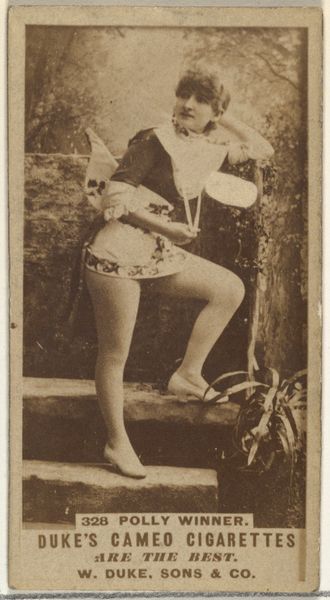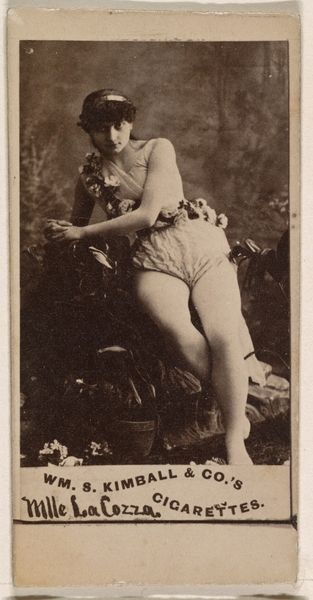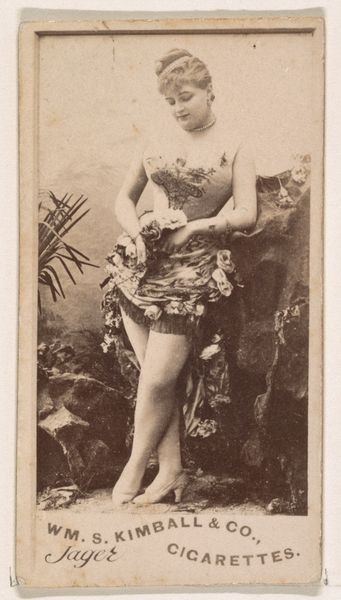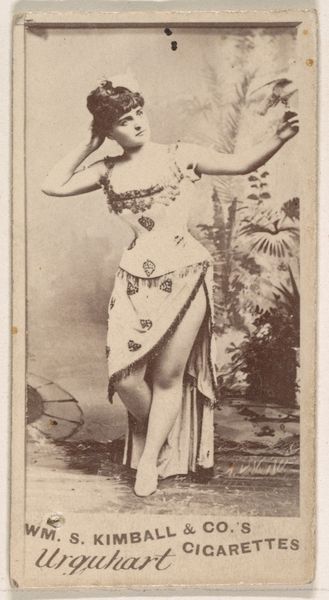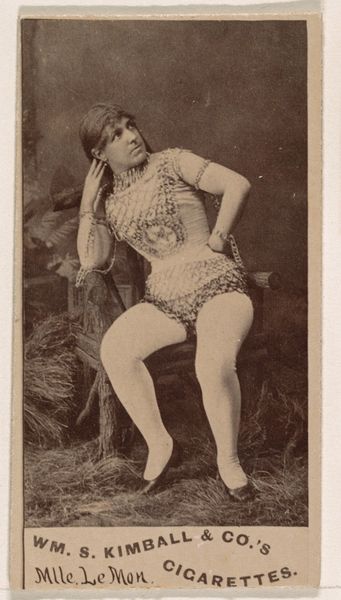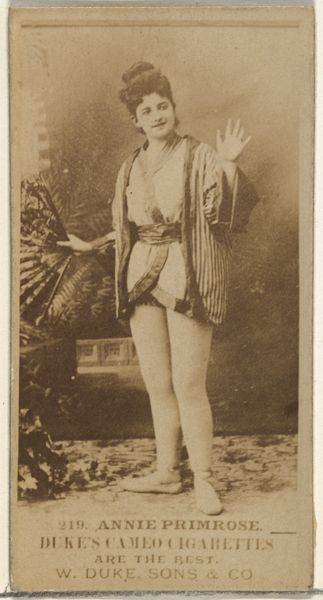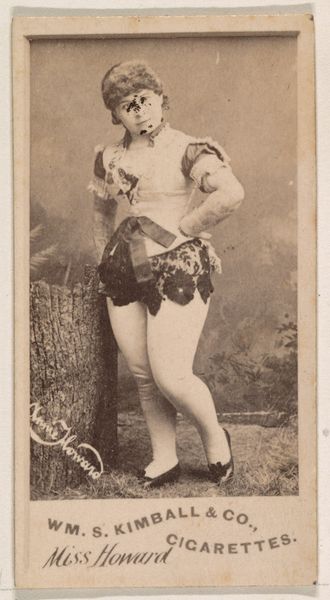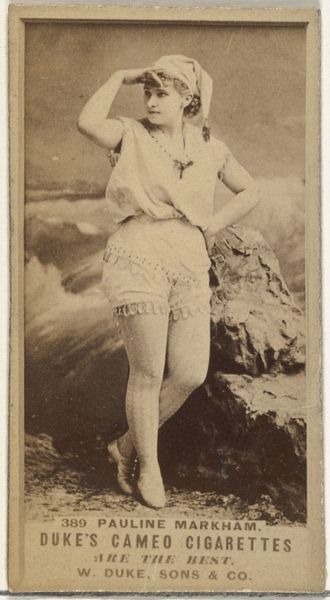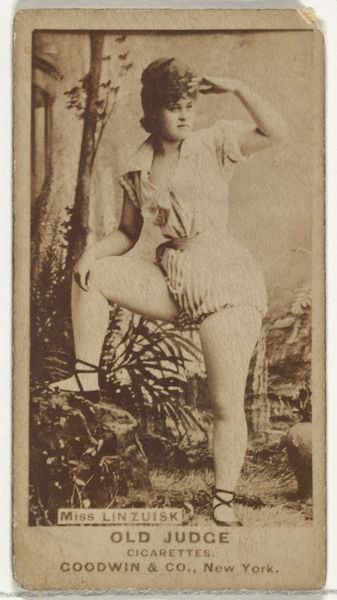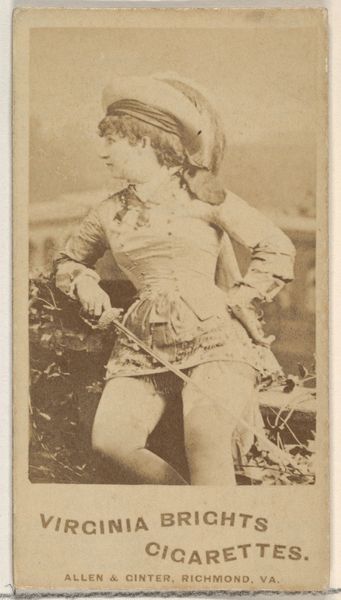
Mlle. Benoit, from the Actresses series (N203) issued by Wm. S. Kimball & Co. 1889
0:00
0:00
drawing, print, photography
#
portrait
#
drawing
#
pictorialism
# print
#
photography
#
19th century
#
erotic-art
Dimensions: Sheet: 2 5/8 × 1 3/8 in. (6.6 × 3.5 cm)
Copyright: Public Domain
Curator: This is "Mlle. Benoit" from the Actresses series (N203), published in 1889 by Wm. S. Kimball & Co. These were printed and included in cigarette packs. What is your first impression? Editor: Immediately, the gaze of Mlle. Benoit strikes me. There is something very sensual about her stance and the way she holds herself—defiant yet inviting. Curator: The photograph really plays into established societal structures of the period, reflecting notions of idealized feminine beauty for commercial appeal. Actresses were idolized and also often subject to immense scrutiny. Editor: Absolutely. It’s also hard to ignore how this card contributed to the commodification of the female image. Selling cigarettes using an actress's allure is a very blatant act of marketing rooted in power imbalances. I would also emphasize that pictorialism comes across due to the very evident visual manipulation here and also that these sorts of photographs sometimes get recontextualized as erotic art. Curator: Pictorialism valued artistic effect over purely documentary representation. The hazy, dreamlike quality often found in these images deliberately softened reality. Kimball took this to an extreme to appeal to men who wanted images to represent their objectification and commodification of women. The "drawing" aspect actually refers to lithographic retouching over the photograph to emphasize certain features and add further aesthetic elements. Editor: It makes you wonder about Mlle. Benoit herself, her agency. Was she complicit, or was this another way the performance was dictated for her? Also, did Kimball or others request certain changes and, if so, how would they impact perceptions about standards of beauty in a patriarchal environment? Curator: Those questions are crucial. We can analyze Kimball’s motivations and techniques, but ultimately, her perspective, and so many others who did not wield power are, unfortunately, absent from the historical record. The historical reality surrounding images such as these cannot simply be described with a label like “sensual” but rather an examination of a set of political, societal, commercial, and ethical forces at work. Editor: Precisely. Analyzing "Mlle. Benoit" compels us to dissect not just its artistic merit, but also its deeply embedded context, to give visibility to critical but underexplored facets that often underlie popular and socially reproduced narratives. The photograph is an indexical trace to deeper power structures, gender constructs, and inequities that require sustained critical analysis.
Comments
No comments
Be the first to comment and join the conversation on the ultimate creative platform.

